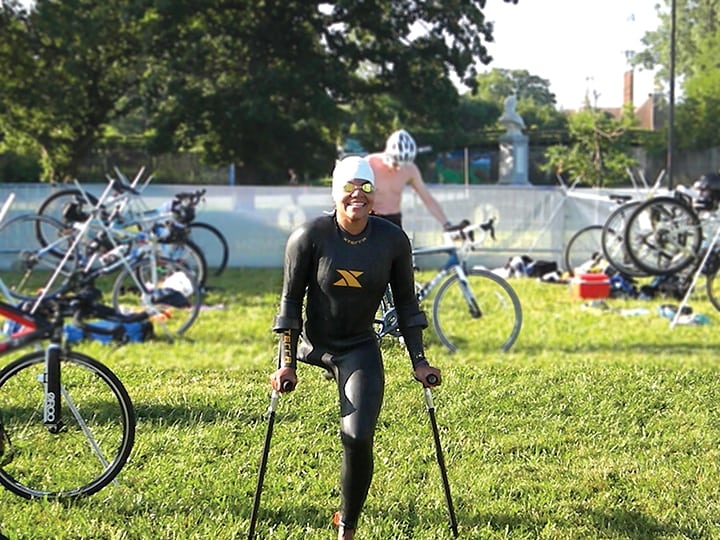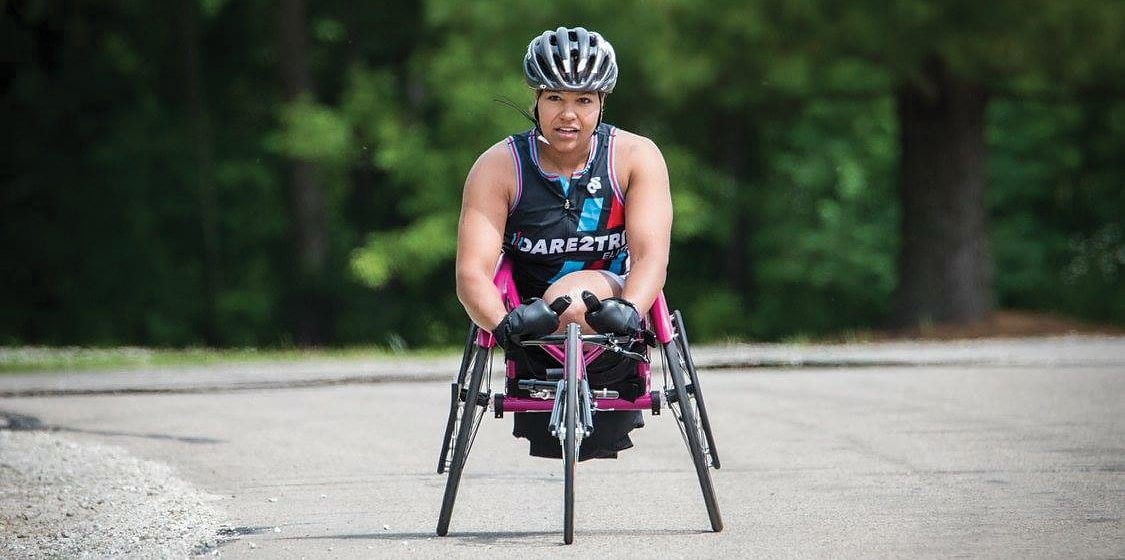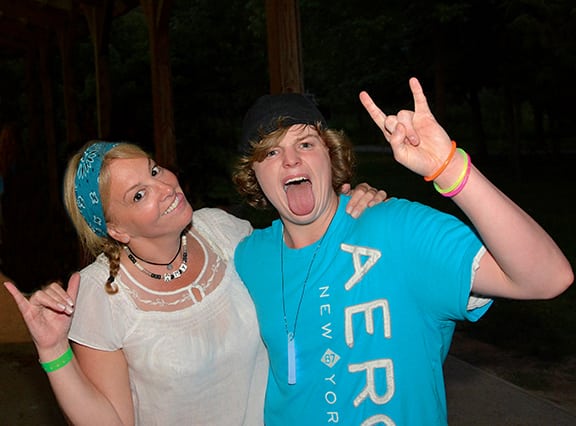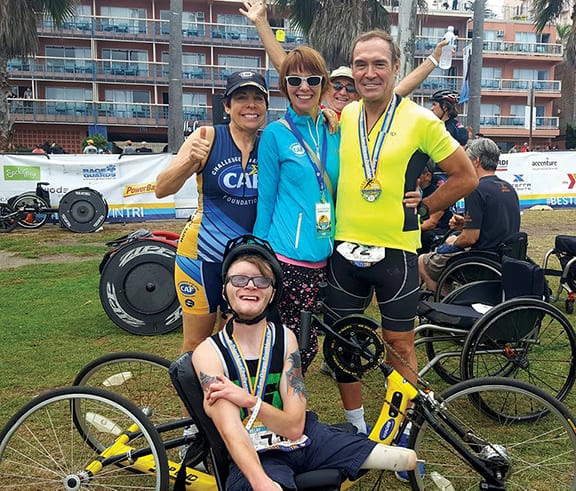“Every one of us is uniquely, wonderfully, and perfectly made. Some of us have differences that are very visible, and some of us have differences that can’t be seen,” says Pam Kelly of Keokuk, Iowa. Pam’s 26-year-old daughter, Nicole, represented her state as Miss Iowa in the 2013 Miss America Pageant. Nicole is a beautiful young woman with an infectious smile and unbroken confidence who had a condition before birth called amniotic band syndrome that caused her to be born without her left forearm.
Nicole says her upbringing helped instill the positive outlook and seemingly fearless attitude she has today. Living in Chicago while completing her master’s studies in broadcast journalism, Nicole says she enjoys being a public figure and inspiring others. “The greatest gift my parents gave me was to teach me to be comfortable speaking for myself and advocating for myself,” says Nicole. “They taught me that my disability belonged to me and there is nothing shameful about it. They instilled in me a sense of pride and tremendous confidence.”
Nicole is the youngest of three, and Pam says the experience of raising her older son and daughter helped her and her husband, Mike, “go with the flow” when it came to Nicole. Pam admits that they babied Nicole at first, but they soon learned that she would adapt and figure things out on her own—from tying her shoes, to riding a bike, to doing her nails. “In time, we learned to not worry or coddle Nicole, but to affirm her and let her make the necessary adjustments on her own. A mom once asked how Nicole managed to put her hair up by herself, and I answered, ‘I don’t know. I guess we’ll have to ask her,’” shares Pam, adding, “One-handed is Nicole’s normal.”


Push or Coddle
Elisa Hanson’s experience raising a child with limb difference was similar to Pam Kelly’s. Elisa and her husband, Steve, from Davison, Michigan, have fostered many children and are the parents of 15, 12 of whom they adopted, including McKayla and her older sister. While the Hanson’s were adopting the girls, then-7-year-old McKayla was diagnosed with rhabdomyosarcoma, an aggressive and usually fatal bone cancer. Though doctors said the cancer would take her life, with Elisa’s persistence and McKayla’s inner strength, it only took McKayla’s right leg, pelvis, and hip.
“McKayla was my first child with a limb loss, and I didn’t know anyone else who had a child amputee. I had no one to gauge my parenting style on, so it was hit or miss where Mac was concerned,” explains Elisa. “What I learned is that if you set limits, then you get what you ask for, because kids are only as limited as their mindset. If you encourage them to try what they believe to be impossible, the impossible just might be possible. Doctors told McKayla she would probably never walk without the aid of crutches or a walker, ride a bike, skate, or even live somewhat of a normal life. So, I bought her a bike and rollerblades and told her to practice. After numerous falls and scrapes, she rode her bike and skated. Yes, I pushed her—though not more than my other kids. We just encouraged her to try anything. As she got older, she took my words literally and now does rock climbing, snow skiing, and trains as a paratriathlete.”
“My sisters were cheerleaders so I wanted to be a cheerleader too to be part of something,” shares McKayla, now 29, who is completing her residency in prosthetics and orthotics in Redford, Michigan. “Then I found out the coach put me on the team because she felt badly for me, so I decided to try to find something different that I’m really good at. I tried out for swimming in middle school and made the team. Then diving. Then springboard diving. My parents told me to try anything, so I started swimming in relays then realized that I could do a whole triathlon myself.”
Learning to Be an Advocate
“All parents want their children to be successful, happy, and healthy members of society,” says Steffini Vandever of Reno, Nevada. She says her son Jonah was born with backward knees, missing digits, clubbed feet, a cleft palate, and no forehead. Like Elisa Hanson, Steffini had to quickly hone up on her child’s medical condition to make informed decisions about his future. After much soul searching, research, and multiple medical opinions, Steffini decided that when Jonah was 18 months old, amputation would offer him the best outcome.

Today a thriving 19-year-old college student, Jonah has a full life and positive outlook. “I wouldn’t be the person I am today if it wasn’t for my mom,” he says. “She’s always been there for me no matter what the circumstances were. She always has encouraged me to get out on my own and do it, to not give up or give in. She taught me to always try before you decide you don’t like it. And she always tells me I will succeed.”
Like Jonah, 19-year old Austin Papson, attending college near his hometown of Brunswick, Georgia, was born with physical anomalies. His mom, Salena, says that when Austin was born, he was diagnosed with spina bifida occulta, severe hand syndactyly, and fibular hemimelia that caused the fibula to be missing from his left leg.
“He was the first person I had ever known who was an amputee. I was young, and it was very terrifying for me,” says Salena. “No one had answers. No one had a diagnosis until we went to a specialty hospital a week after Austin was born. The physicians made me feel as though they wanted to make a guinea pig out of my son. We were sent to geneticists, neurologists, ophthalmologists, orthopedists, pulmonologists, otologists, and nephrologists. I had to quickly learn about limb abnormalities. I soon realized that everything I thought I knew from raising my then-3-year-old daughter went out the window. And most importantly, I had to learn to speak up.”
Limitless
Like Steffini, Salena decided that amputation would afford Austin his best life. Though his doctors said he would never sit up, walk, or toilet train, no one seemed to have told Austin what he couldn’t do.
“I had to relax with Austin, but I was so scared when he would try to walk with his prosthetic in fear of him harming himself. However, in time, I realized that I had to back off and allow Austin to fall and encourage him to get back up,” she explains. Salena credits Austin’s pediatrician with the sage advice, “Your son is going to be as handicapped as you make him.”

“I decided to let Austin set his own limits,” Salena says. “And not only did he learn to sit and walk, but [he] was soon running, jumping, playing basketball, and doing many other physical activities.”
Still, Salena admits that she “absolutely coddled” Austin when he was small.
“Growing up, I didn’t get to do many of the activities I wanted to participate in,” Austin says. “I would have loved to play football or to be on the basketball team. Even though we all knew I could play just fine, playing sports never really seemed to be an option for me. I believe there was a fear of me getting hurt. I feel like by sheltering me, it hurt my confidence in my abilities.”
Jonah also admits life hasn’t always been easy. “My childhood had its ups and downs, especially being an amputee. It has been stressful learning how to do things and participating in activities being a young lad with no limbs,” shares Jonah. “However, it gave me the opportunity to keep trying and never give up no matter what people said to me when I was younger.”
As difficult as it may be, Steffini says, “Don’t let other people, doctors, and therapists tell you what your child is capable of doing or not doing. You are the best advocate for your child.”




